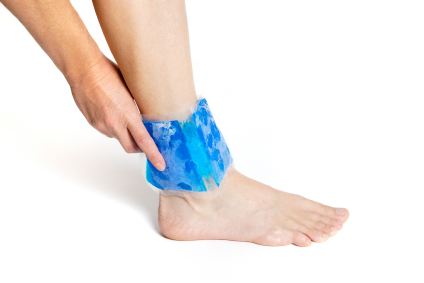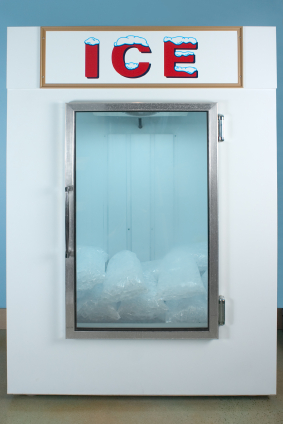According to a recent article, a "debate is stirring about whether ice - for decades a medicinal tool employed by physicians, athletic trainers and soccer moms alike - is effective in limiting swelling and enabling athletes to return to action."
The article focuses on a new book called "Iced! The Illusionary Treatment Option" by Gary Reinl, a former personal trainer and the developer of an electronic stimulation device, in which he argues that ice delays healing from a sports injury,  quoting no less an authority than Dr. Gabe Mirkin, who, it says, is credited with developing the rehabilitation acronym RICE (rest, ice, compression, and elevation), as now being against the practice because, he claims, icing "decreases circulation, so it slows healing."
quoting no less an authority than Dr. Gabe Mirkin, who, it says, is credited with developing the rehabilitation acronym RICE (rest, ice, compression, and elevation), as now being against the practice because, he claims, icing "decreases circulation, so it slows healing."
Also apparently in favor of taking the "I" out of RICE, the article claims, is the National Strength and Conditioning Association, and John Shaeffer, an athletic trainer for a number of well-known current and former Olympic athletes, who goes so far as to baldly state that that "there's no useful therapeutic use for ice in sports medicine."
While Reinl believes that the "ice age is over," the article, to its credit, goes on to present the other side of the debate, quoting a number of athletic trainers, and an orthopedic surgeon, as still believing in the value of ice, especially in the period immediately after injury, in order to reduce acute-injury bleeding, relieve post-activity soreness, and for pain relief.
So we wondered where MomsTEAM's expert physical therapist, Keith Cronin, stood in the ice versus no ice debate. Turns out he isn't ready to advise sports parents to put the ice on ice.
Saying that ice has no therapeutic use in sports medicine, when it has demonstrated success for decades, may get someone attention says Cronin, but is "garbage." (talk about not mincing words!)
"I agree with the physiology that putting ice on a kid 24/7, will slow down lymphatic drainage, and it will reduce blood flow to the area. That is consistent with current understanding of physiological principles. But utilizing it intermittently throughout the day reduces pain, excessive swelling, and most important forces athletes to rest, elevate, and hopefully also compress the injured body part," Cronin said.
"From my experience the 'I' in "RICE" is the only thing that athletes seem to follow. Elevation is a rarity, and, as for compression, how many people know the proper technique and level of compression to wrap a an injured body part?"
Cronin was not against skilled athletic trainers, physicians, or physical therapists deciding whether to ice or not, but he worries that telling "parents, coaches, and athletes to 'skip the ice, it doesn't work' sends the wrong message and may "open up Pandora's box for other problems that ice h elps limit."
elps limit."
"I believe as clinician we should regularly question our own science and treatment methodologies," says Cronin, "but I find those that operate in the world of extremes are favoring their own bias over good medicine."
Cronin admitted that he sometimes had to put his biases aside in the interest of patients. For example, he said he hated using orthotics, particularly with children, as he had a bad experience with using them and wanted to promote self healing.
"But the reality is, in some instances, orthotics are not only beneficial but provide patients with temporary relief and perhaps the motivation to work past the pain."
To prove his point, he said that he was going to attend a course that night - to learn how to mold and fit pre-fabricated custom orthotics.
"My bias has not changed, but in the interests of patients, I need to see past my own opinions and look at the whole picture of the appropriate blend of science, good practice, and the viewpoints of the general public that will inevitably steer their rehabilitation in a good or bad direction."
In short, at least for Dr. Cronin, it isn't time for parents to put the ice on ice.








